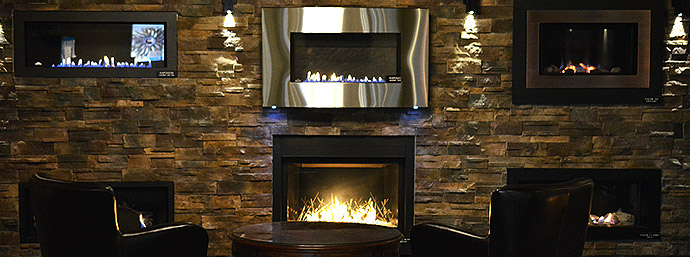Typically there are two ways a gas fireplace works to warm your home.
CONVECTION HEAT
Convection heat involves blowing air across the firebox, warming the air and then it is circulated out into the room. This process involves a blower fan that requires hydro to run. The fireplace heats up, the fan starts and then blows the warm air into the room. The fireplace will then shut down and blower will run until all the warm air has been pushed out. When the temperature drops in the room, the fireplace will light up and the cycle will repeat. With any equipment that requires a fan there is a certain amount of noise that comes with it.
RADIANT HEAT
Radiant heat is commonly known for being the most efficient and comfortable form of heat. The ultimate radiant heater is the sun. Radiant heat requires NO hydro (a blower/fan is not necessary). Therefore there is no fan noise and if you have NO POWER the unit will operate as usual. Your fireplace will continue to do its job during a power outage.
Radiant heat works by transferring heat from flames and hot surfaces to solid objects such as furniture, walls and floors by means of infrared radiation. Because radiant heat warms objects in its path, they in turn emit heat and add to the comfort of your home. Radiant heat flows out up to 22 feet before it starts to rise, maintaining heat longer at floor level, where you want it the most.


